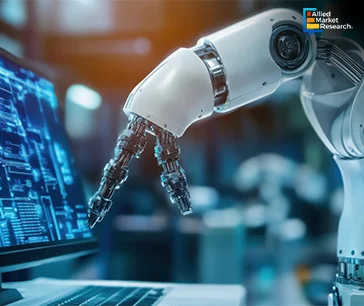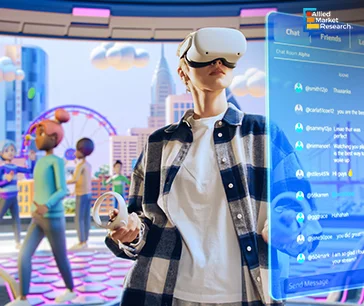Table Of Contents
- Rising adoption of industry-specific cloud platforms creating favorable conditions for growth
- Increasing popularity of AI-powered IT services transforming the domain
- Growing investments in hyperautomation impacting the landscape positively
- The emergence of metaverse technology strengthening the foothold of the domain
- Integration of AI in cybersecurity solutions helping the sector flourish in Q4 2024
- Winding up

Onkar Sumant

Koyel Ghosh
Analyzing the Top 5 Trends Transforming the ICT Domain in Q4 2024

Since the 1990s, the ICT sector has experienced tremendous growth, driven by the widespread adoption of digital technologies and the emergence of numerous innovations. From Bluetooth and Wi-Fi to IoT and cloud computing, different new types of wireless solutions have been developed which have made long-distance communication easier and faster. Additionally, the advent of artificial intelligence, machine learning, and blockchain have reshaped the dynamics of the sector significantly. Many international research organizations, universities, publicly funded think tanks, and private companies have proactively invested in R&D activities, thus opening new avenues for growth in the landscape. Recently, Allied Market Research compiled a study on the top 5 trends influencing the ICT domain in Q4 2024. These trends have played a major role in the overall expansion of the sector and are expected to contribute to its rise in the coming period.
Rising adoption of industry-specific cloud platforms creating favorable conditions for growth
Industry cloud platforms are cloud-based software applications, services, and solutions that are designed as per the specific needs and requirements of the industry verticals such as healthcare, supply chain management, manufacturing, etc. The main aim behind the deployment of these services is to streamline the operational workflow of the industry and enhance efficiency and productivity in the long run. Furthermore, companies are increasingly adopting cloud technology as it allows easy integration with existing systems. Also, these platforms get updated as per the evolving industry needs without any additional costs, thereby reducing the overall expenses associated with hardware upgrades.

The automotive manufacturing industry is among the latest sectors to embrace cloud-based platforms. The launch of 5G services in most of the developed and developing countries across the globe has further increased the applicability of these cloud solutions in the automobile industry. Autonomous driving systems and connected mobility architecture are primarily built on cloud-based software applications. Modern vehicles equipped with intelligent connectivity and smart devices such as sensors and AI-powered tools help capture data from different sources. The data is then analyzed to optimize vehicle performance and enhance the overall driving experience. Moreover, cloud services for automotive applications aid in predictive maintenance wherein the behavioral pattern of the driver is studied to predict any future problems that the car might encounter, thus reducing downtime and cost of repair.
Increasing popularity of AI-powered IT services transforming the domain
In the last few years, the rise of artificial intelligence has affected nearly every sector of the global economy. Apart from retail, finance, and healthcare, AI has completely transformed the sphere of customer service by assisting companies in engaging with the audience more effectively. Studies conducted by several experts have shown that more than 70% of consumers prefer brands that offer better and faster service. Enterprises are increasingly using AI tools to create advanced chatbots that interact with customers, address their queries, and offer recommendations in real-time. Moreover, these chatbots, when integrated with logistics software applications, help companies and consumers track their goods and packages, thus enhancing the overall transparency of business operations.
Over the years, the expansion of e-commerce companies has increased the demand for AI customer service providers. These platforms deploy natural language processing techniques to offer personalized services and tailored experiences to the user. With the help of sentiment analysis tools, businesses analyze behavioral patterns, purchasing preferences, and transaction history to better engage with the customers and ultimately increase the consumer retention rate. The use of predictive analytics using machine learning algorithms is also one of the popular trends in the ICT domain in Q4 2024. These mechanisms aid companies in forecasting the demands for certain goods and services, thus assisting them in inventory management and resource optimization.
Growing investments in hyperautomation impacting the landscape positively
Hyperautomation refers to the increasing automation of different business processes using advanced technologies such as AI, robotic process automation (RPA), intelligent business process management suites (iBPMS), event-driven software architecture, integration platform as a service (iPaaS), etc. As per a report published by Allied Market Research, the hyperautomation market is expected to gather a revenue of $98.3 billion by 2031. The industry accounted for $6.9 billion in 2021, rising at a CAGR of 30.4% during 2022-2031. The increasing digitalization of traditional manufacturing plants is anticipated to be the main growth factor contributing to the expansion of the industry. Along with this, the rising adoption of RPA by banks and other financial institutions has created new investment opportunities in the industry.

Along with BFSI and manufacturing sectors, hyperautomation has also been introduced in many healthcare institutions and companies in the fourth quarter of 2024. These solutions aid in enhancing the patient's experience by automating billing processes and improving communication channels between doctors and patients. Hospitals and medical centers have to adhere to numerous regulatory norms and compliance standards to continue their business operations without any interruption. Hyperautomation systems, by performing repetitive tasks efficiently, help these organizations comply with all the legal conditions, thereby freeing up the labor for more productive tasks. Moreover, hyperautomation in supply chain management helps logistics companies simplify procurement, billing, and delivery processes.
The emergence of metaverse technology strengthening the foothold of the domain
Metaverse is a network based on the convergence of physical and three-dimensional (3D) virtual environments whose primary purpose is communication and social interaction. As per AMR’s report on the metaverse market, the industry accounted for $41.9 billion in 2020. The landscape is anticipated to gather a revenue of $1,237.0 billion by 2030, rising at a CAGR of 40.4% during 2021-2030. In the post-pandemic period, there has been a huge shift in the work culture, with many companies adopting WFH and remote work options. These workplace changes have increased the demand for metaverse technologies to connect with different employees and ensure smooth communication between them. Additionally, the overall growth in popularity of cryptocurrencies and non-fungible tokens has expanded the footprint of the industry in Q4 2024.

Out of all the sectors, Metaverse has had the biggest impact on the entertainment industry. Technologies such as augmented reality, virtual reality, cloud computing, etc., have facilitated the smooth integration of this innovative technology in gaming and similar other applications. The metaverse in entertainment market is estimated to register a revenue of $221.7 billion by 2031. The industry accounted for $13.8 billion in 2021 and is projected to rise at a CAGR of 32.3% from 2022 to 2031. An overall rise in the living standard of people around the world has increased consumer expenditure at concerts, events, live shows, etc., which has impacted the landscape positively in the fourth quarter of 2024.
Integration of AI in cybersecurity solutions helping the sector flourish in Q4 2024
The increasing integration of digital technologies across various industries such as finance, retail, and healthcare has enhanced the service delivery capabilities of companies within these sectors. However, the rising digitalization has increased concerns related to the privacy and security of users. The surge in cyber threats and malware attacks on various public infrastructure facilities across the globe have further escalated the demand for robust cybersecurity architecture. To cater to the evolving dynamics of the ICT domain, many enterprises have started integrating AI into their cybersecurity solutions to enhance threat perception and neutralization capabilities. According to a report by Allied Market Research, the AI in cybersecurity market, which accounted for $19.2 billion in 2022, is anticipated to gather a revenue of $154.8 billion by 2032, rising at a CAGR of 23.6% during 2023-2032.
In North America, the adoption of artificial intelligence and machine learning is quite high due to the growing awareness regarding the importance of cybersecurity among private companies, government entities, and civil societies. Moreover, many countries have enacted laws and regulations compelling enterprises in this province to establish a comprehensive security framework for data protection. The primary purpose of integrating AI-based tools into cybersecurity solutions is to effectively analyze and prioritize threats, ensuring better defense of systems. Moreover, AI-powered systems help safeguard data across various environments from malicious threats without the need for extra hardware, thereby lowering operational costs for companies.
Winding up
The growth of the ICT domain is attributed to the increased pace of digitalization in different sectors of the global economy. Moreover, the emergence of AI, machine learning, IoT, big data analytics, etc., has reshaped industrial processes to make them more efficient and productive. Additionally, the increased adoption of industry cloud platforms and hyperautomation has helped the sector flourish in Q4 2024.
Stay in touch with our analysts for an in-depth analysis of the latest advancements and investment opportunities in the ICT sector!

